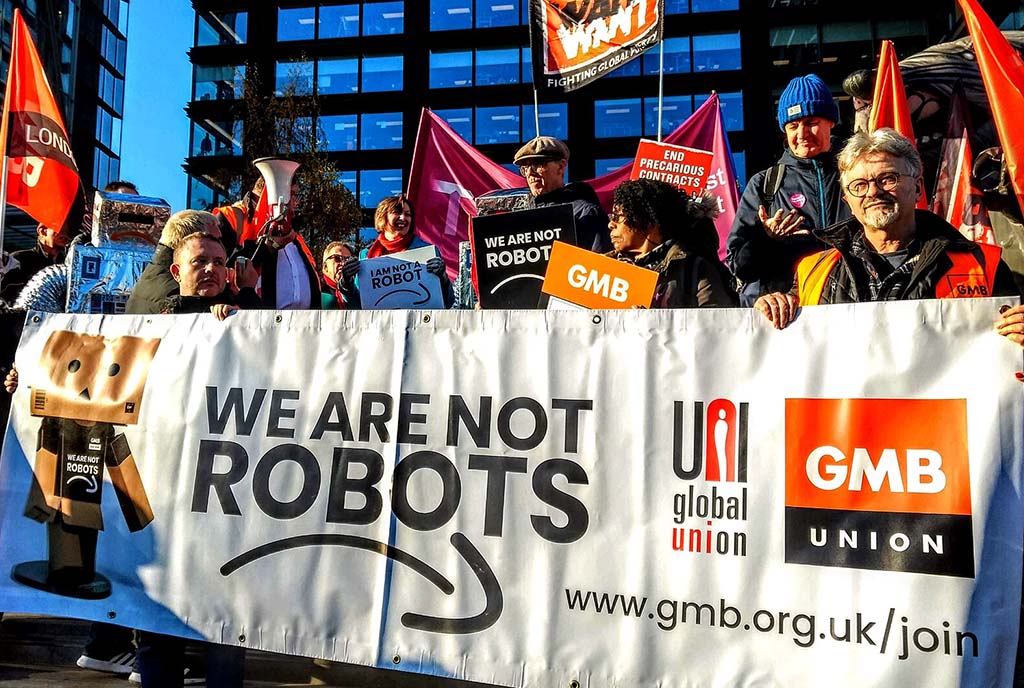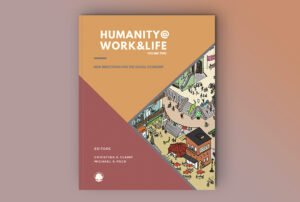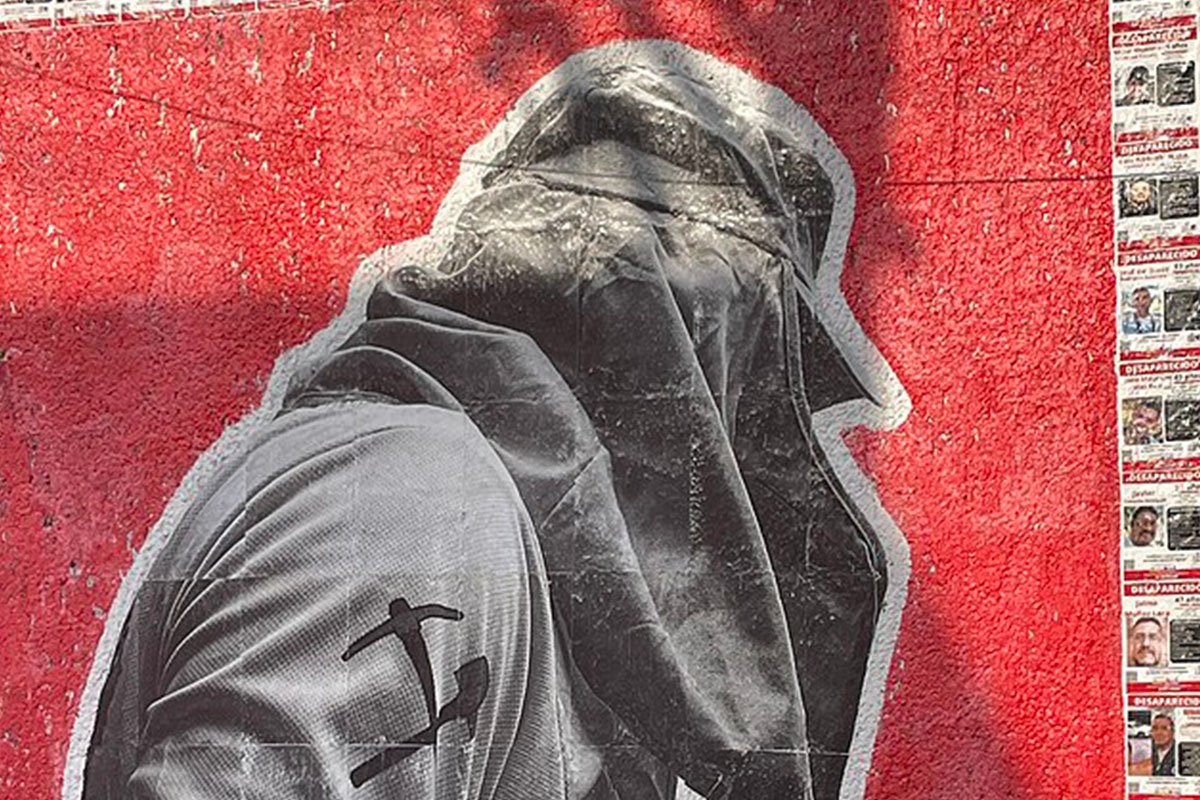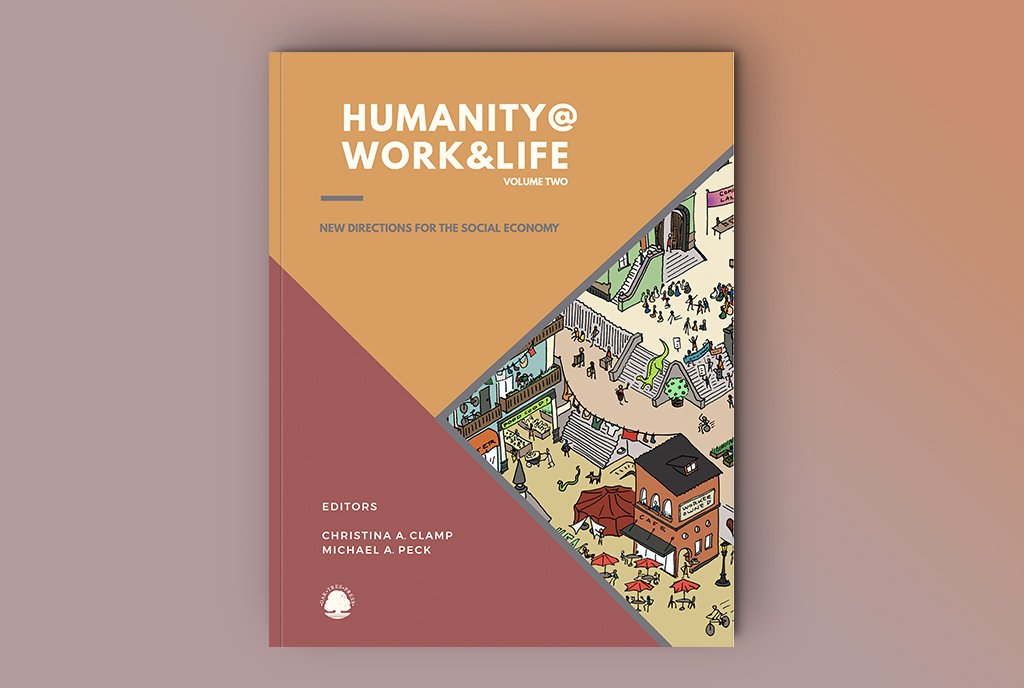
Have you ever been in a long, over-air-conditioned meeting and realized, “Wait, are any decisions made here actually going to be implemented?” Many of us—organizers, workers, activists—have felt the same, in our own organizations and in state and federal committee meetings also. These spaces too often seem disconnected from the real-world dynamics that shape workers’ lives.
As the global economy has reorganized itself over the past 30 years, we have witnessed a massive amount of growth in the power and scale of today’s corporations. As a result, too often labor struggles today conjure up emotions of being in the wrong room, using strategies and tactics that worked decades ago—as if the ways corporations weasel their way out of making concessions have not evolved.
As two longtime labor organizers, we’re done wasting time in rooms that fail to keep pace. So, too, are most workers. Today, we need robust investments to build organizing infrastructure in strategic markets, where worker-to-worker engagement can adapt quickly to changes in corporate power.
In building this infrastructure, it is important to bear in mind that labor strategy in the 1930s was not mapped out in a funding proposal, nor did the legal doctrines of that time protect the ways workers needed to organize and bargain collectively. Then, workers, movement leaders, funders, legal strategists, and policymakers had to step up and create a framework that would meet the new conditions. And that, too, is what many workers at large multinational companies need now.
Workers Find a Way
Some days, it is hard to believe that in the last three decades, corporations were allowed to grow to the size and scale that we see today. For example, Amazon and Walmart, which together have over 3.6 million workers, now employ more people than the US federal government. They also employ more people than the Chinese army, the largest army on the planet.
Confronting this reality should not be a deterrent, but motivation for organizing and expanding democracy. These corporations must be transformed, democratized from within, to truly make the kind of lasting change that our country (and the world) needs—namely narrowing the gulf between the rich and poor. Such organizing also has the benefits of reducing the potential for corruption and guarding against rule by the wealthy (also known as plutocracy).
In short, the question of how to challenge the corporate consolidation of wealth and rule-setting and instead democratically distribute decision-making and the collective wealth generated by shared labor is perhaps the most critical challenge for movement leaders of this era.
While most large corporations behave as if they were invincible, recently, workers have proven that by joining together and being strategic, they can prevail, as they did at Starbucks, United Parcel Service, and the Big Three automakers during the “Stand Up” strikes of 2023. Each of these campaigns employed company-specific strategies that maximized worker power.
Worker power doesn’t go away as the economy changes. It shifts. And it must be clarified in relation to the global economy to leverage it effectively. No matter where the organizing is happening, it’s critical to build campaign infrastructure in specific markets where workers can exert the most direct influence on corporate decision-makers.
A Tale of Three Companies
Every company has its Achilles’ heel. While worker anger and courage to organize may be widespread and in distant locations, those emotions should be directed and strategically amplified in ways that will transform the corporations that employ them.
The responsibility of labor support organizations like Jobs With Justice is to create the infrastructure that allows workers to leverage the greatest power possible to win. We call this a “strategic market approach,” paying close attention to the structure of markets to increase worker power and leverage. There are many examples highlighting how this works. Here are a few of them:
- Target: A joint partnership of Centro de Trabajadores Unidos en la Lucha (Workers Center United in Struggle or CTUL) and SEIU Local 26 took on organizing the janitors at Target stores in the Twin Cities region of Minnesota. The unions ultimately won an unprecedented victory for janitors cleaning not only Target stores, but other metropolitan area retail spaces.
Organizers at the heart of the campaign talked about how they were able to put a different level of pressure and responsibility on Target management because the Twin Cities were Target’s corporate headquarters as well as the home of top company management. The victory at Target stores pushed other retailers to follow. The strategy of taking on Target in the city of its home office was key to that campaign. - Walmart: When workers at Walmart built OUR Walmart, they faced the challenge of how to build an organization that could challenge the largest private employer on the planet. In their multiyear campaign, workers and organizers saw a marked difference in how the company reacted when workers organized their actions at the home offices of Walmart in Bentonville, AR, compared to other larger cities such as Los Angeles or Chicago.
Actions at the home office and during Walmart’s annual shareholder meeting evoked a very different response, with the company taking a much more aggressive approach to locking down its annual meeting and attempting to insulate itself from any negative outside challenge. Workers and organizers also saw a difference when targeting actions at the board of directors’ meetings.
Focusing on Bentonville and other cities where board members lived brought major workplace improvements, such as wage increases and changes to national leave policies. And like the Target victory, those victories were not limited to just the company directly challenged through the campaign. It created a ripple that impacted the lives of hundreds of thousands of retail workers. Taking on Walmart and its directors in their home cities made it harder for the company, and its leadership, to avoid worker demands. - Amazon: While there are many different approaches currently underway to challenge Amazon, the HQ2 process, which ended with Amazon being rebuked by New York City, contains important lessons.
Amazon used the HQ2 process as a “Hunger Games”-like exercise, with various cities outdoing themselves as to who could harm themselves and their tax base more in order to lure the corporate giant. The coalition that formed in New York City to challenge Amazon demonstrated that even with $3 billion in “promises” from the corporation, they could still mobilize elected officials, community members, and other key parts of the community to demand better. And the community won.
Amazon is still eyeing New York, and residents’ ability to challenge Amazon on issues that need to change will likely provide strategic opportunities. Knowing and building campaigns in the markets that matter in a company’s growth strategy can provide key leverage and advantages.
Applying a Strategic Market Approach to Entire Industries
A strategic market can also go beyond one metropolitan area or even state. The political economy of the US South, for example, includes a set of industries that have organized and reorganized themselves in ways that have driven economic growth and development mostly unrestricted except for a brief period during Reconstruction. Most Southern state governments have been structured around these industries—including auto manufacturing, aerospace, chemicals, and more—gaining the region an “open for business” reputation.
Sign up for our free newsletters
Subscribe to NPQ's newsletters to have our top stories delivered directly to your inbox.
By signing up, you agree to our privacy policy and terms of use, and to receive messages from NPQ and our partners.
The corporate orientation to the Southern labor market, which contains the majority of the nation’s Black population, is best summarized by one state’s slogan, “the Alabama discount”—referring to the comparatively suppressed wages throughout the region still clinging on to the lowest common denominator legacy of chattel slavery.
The most recent battles in this strategic market center have been in auto and electric vehicle manufacturing. Workers, many of them Black, are pushing back against their employers who are using federal investments to produce more climate-friendly products, but at the expense of Southern workers, natural resources, and communities.
Taking On the Corporate Colossus
Taking on massive corporations is critical to the future of democracy—and of working people within it. To do so successfully requires being strategic and learning from previous experience. It is about understanding which markets a company wants to grow, expand, and control in order to maximize profit.
Labor organizers need to be where corporate leaders live and where they want to go. And to do this, workers need accessible tools to enable them to talk to each other when employers do not want them to.
How do they get access to those tools? Even those outside of active union organizing efforts—the majority of US workers—can benefit from some existing legal protections from retaliation while talking to each other about their rights. Worker centers can support these workers by investing in organizations and technology designed to envelop workers into a larger movement home and activate them as organizers in their own facilities, educating each other on their basic rights and conditions.
Labor support centers, such as Jobs With Justice, can assist by conducting needed research to clarify strategic markets yet to be discerned, presumably different in varying sectors and industries.
And how organizing takes place also matters. Organizing at the intersections of worker identities will build more powerful campaigns in strategic markets. For instance, in Dallas, the interests of Black Amazon consumers could be aligned with the interests of Black Amazon workers in nearby facilities who are experiencing disproportionate police surveillance.
Ready for Takeoff
Imagine the moment when the Wright brothers finally got the engineering correct and attached the right parts to the right pieces to make that first airplane fly. That is the stage of design of today’s labor movements. So much can come from helping workers design and test innovative new organizational infrastructure and build right-sized power in strategic markets.
Identifying the Achilles’ heel of corporations illuminates that what some previously thought impossible is doable. The ability to challenge a massive institution becomes more plausible when we establish campaign infrastructure in the company’s core markets.
History shows that workers, through common struggle and democratic action, can achieve amazing things. We all have a stake in democracy: Without economic democracy in the workplace, political democracy is at risk. The key thing, as workers challenge corporate power, is to support them; let’s not let them do it alone.











